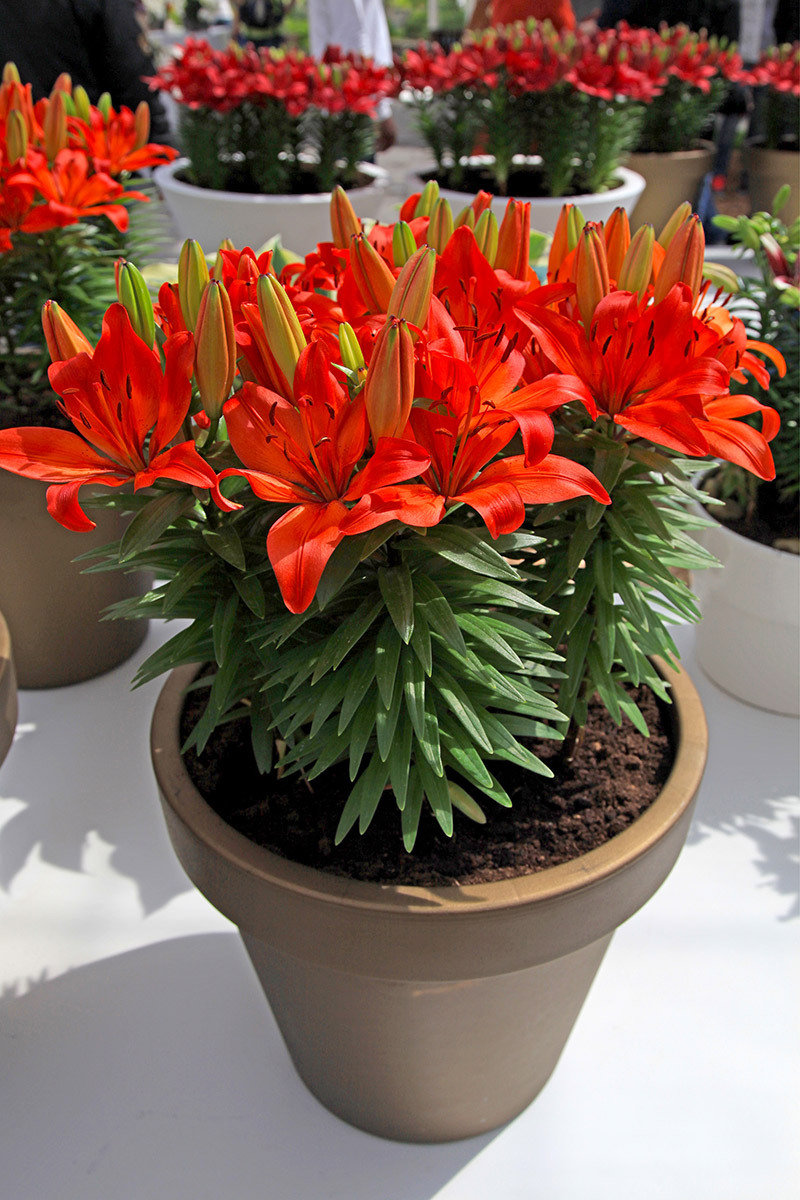8 Secretive Sunflower Details You Had No Idea About
Posted on 29/08/2025
8 Secretive Sunflower Details You Had No Idea About
When you gaze across a brilliant field of sunflowers, it's hard not to be captivated by their radiant yellow petals and towering stalks. But did you know that these remarkable blossoms hold far more secrets than meets the eye? Sunflowers are not only aesthetically pleasing, but they're loaded with fascinating biological quirks, unexpected uses, and centuries-old traditions. In this article, we'll unearth eight secretive sunflower details that will leave you seeing these golden wonders in a whole new light.

1. Sunflowers Actually Track the Sun, But Only When They're Young
Heliotropism--the phenomenon of a plant moving in response to the sun--is often associated exclusively with sunflowers, but the full story is rather surprising. Sunflower buds and young sunflowers sway their blooms from east to west throughout the day, a process powered by growth hormones called auxins. This movement is referred to as solar tracking, but here's the hidden detail: mature sunflower heads stop following the sun and instead permanently face east.
- Young sunflower plants track the sun for optimal photosynthesis.
- Mature sunflowers always face east, which researchers discovered helps attract more pollinators like bees by warming the flowers faster in the morning.
This behavior is exclusive to the early stages of a sunflower's life, making the secret life of a young sunflower more dynamic than you might have imagined.
2. The Fibonacci Sequence is Coded in Sunflower Seeds
Sunflowers don't just produce a feast for the eyes; their detailed seed patterns are a living illustration of mathematical wonders. The arrangement of sunflower seeds is governed by the Fibonacci sequence, a numerical pattern where each number is the sum of the two preceding ones (1, 1, 2, 3, 5, 8, 13, etc).
- The spirals you see in a sunflower's center are precisely aligned at 34 and 55, or 55 and 89 spirals--successive Fibonacci numbers--depending on the species.
- This arrangement allows for maximum packing efficiency and optimal use of space and nutrients for each seed.
What seems random is actually a perfectly ordered system, revealing that nature's secret mathematics is hiding in plain sight.
3. Some Sunflowers are Not Yellow at All
Sunflowers are synonymous with a golden hue, but this is only part of the story. While most are familiar with the iconic yellow petals, some sunflower varieties come in a spectrum of colors--including deep reds, purples, oranges, and even bi-color blends.
- 'Chocolate Sun': Reddish-brown petals with a dark center.
- 'Moulin Rouge': Deep burgundy petals, favored in floral arrangements.
- 'Italian White': Creamy off-white petals.
Gardeners and botanists especially love these rare cultivars for bringing unique color palettes to gardens and bouquets. So, the next time someone mentions sunflowers, remember it's not all just about yellow.
4. Sunflowers are Natural Soil Detoxifiers
Not only are sunflowers beautiful and edible, but they also play a crucial role in environmental clean-up. Sunflowers are "phytoremediators," meaning they have the unique ability to draw toxins and heavy metals--such as lead, arsenic, and uranium--from contaminated soil through a process called phytoremediation.
- After the Chernobyl nuclear disaster, sunflowers were planted to absorb radioactive isotopes from the soil and water.
- This process has also been used at former industrial sites and areas suffering from pollution worldwide.
Thus, sunflowers are secret superheroes, quietly reclaiming toxic landscapes and making them viable again for flora, fauna, and even human use.
5. There's a Surprising Culinary World Within Sunflowers
When it comes to edible uses, most people think of roasted sunflower seeds or sunflower oil, but the culinary applications go much deeper--a detail even seasoned gardeners may not know!
Edible Parts of the Sunflower Include:- Seeds - Delicious as snacks, pressed into oil, or as a crunchy salad topping.
- Sprouts - Sunflower microgreens are nutritious and packed with protein.
- Petioles and Buds - The unopened flower buds can be steamed and eaten much like artichokes.
- Petals - Use them as a colorful garnish for salads or desserts.
And if you ever come across sunflower butter (a nut-free peanut butter alternative) or a sunflower honey, thank the beekeeping industry's reliance on vast sunflower fields for their subtle, floral flavor.
6. Cultural Symbolism and Hidden Messages
Sunflowers have held deep meanings for centuries and across numerous civilizations.
- In Native American traditions, sunflowers symbolized harvest, bounty, and provision, playing a vital role in rituals and daily life.
- In ancient Peru, the Incas worshipped golden sunflowers as representations of their sun god, Inti.
- Through the Victorian language of flowers, sunflowers conveyed loyalty, adoration, and unbroken bonds.
- More recently, sunflowers have become a widespread symbol for peace, anti-nuclear movements, and hope during Ukraine's national struggle, given their status as the country's official flower.
So, the next time you see sunflowers, remember: their upright faces and sunny demeanor are also carrying messages of hope, faith, and resilience.
7. Giant Sunflowers Can Grow Taller Than a Giraffe
If you thought sunflowers were just tall, think again! Some varieties are record-breaking behemoths. The world record for the tallest sunflower is a staggering 30 feet and 1 inch (about 9.17 meters), set in Germany in 2014. That's higher than a full-grown giraffe!
- Certain cultivars, such as 'Russian Giant' and 'Titan', are bred specifically for vertical height--often reaching over 10-15 feet in regular gardens.
- Sunflowers grow rapidly and may add several inches per day during peak growing season, thanks to their efficient water and nutrient uptake.
Not only does this make them impressive garden showpieces, but also important natural screens and windbreaks for farms.

8. Sunflowers are Bio-Indicators and Trackers of Environmental Change
Did you know sunflowers act as living barometers for environmental change? Research has found that sunflowers are particularly sensitive to shifts in temperature, light, air quality, and even radiation.
- Their rapid, visible reactions to stress--such as leaf curling, wilting, or changes in flower direction--make them ideal sentinel species for researchers monitoring environmental conditions.
- Farmers sometimes plant sunflowers to judge the health or water content of soil, since their reactions are immediate and visible.
If you're seeking a living early-warning system, there's more than meets the eye in a humble sunflower.
Conclusion: The Secret Life of Sunflowers Revealed
So, the next time you bask in the beauty of a sunflower, know that you're witnessing one of nature's secret marvels. Whether tracking the sun, cleaning up toxic soil, dazzling with unexpected colors, or standing as cultural beacons, these spectacular plants are loaded with little-known details just waiting to be uncovered.
If you've enjoyed learning these eight secretive sunflower facts, consider sharing this knowledge the next time someone admires a field of golden blooms. Not only are sunflowers icons of summer, but they're also remarkable agents of environmental health and cultural richness. And now, you are in on the secrets!
Frequently Asked Questions About Sunflowers
- Are all sunflowers edible? While seeds, sprouts, and certain parts are edible, not all sunflower species are equally palatable. Always ensure your sunflowers are non-toxic varieties intended for consumption.
- Do sunflowers only grow in summer? Sunflowers prefer warm weather and are planted in spring or early summer, but there are early and late-blooming varieties to extend the season.
- Can sunflowers really clean up nuclear waste? Yes! Sunflowers were successfully used after Chernobyl and Fukushima to remove radioactive contaminants from water and soil.
Discover More About the Enchanting World of Sunflowers
Let these secret sunflower details inspire you to plant your own, support local pollinators, and appreciate the subtle wonders of one of nature's brightest blooms. Share this article for more sunflower insights and keep uncovering hidden stories behind your favorite plants!
Latest Posts
Understanding Environmental Policies for Flower Waste in [AREA]
8 Secretive Sunflower Details You Had No Idea About
A Journey Into Expert Orchid Care






